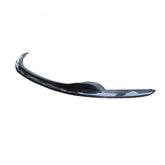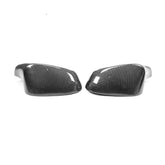Upgrading to a performance exhaust system is one of the most impactful modifications you can make to your vehicle. Not only can it enhance the sound of your ride, but it can also improve horsepower, torque, and overall vehicle performance. Here's your ultimate guide to understanding and choosing the right performance exhaust for your car.
Understanding Performance Exhaust Systems
Performance exhaust systems are designed to increase the efficiency of exhaust gas expulsion, reduce backpressure, and enhance the engine's ability to breathe. This, in turn, can lead to improved fuel economy, increased power, and a more aggressive exhaust note.
Key Components of Performance Exhaust Systems
-
Headers/Exhaust Manifolds: Replace stock manifolds to reduce backpressure and improve exhaust flow. Headers are particularly effective in naturally aspirated engines.
-
Catalytic Converters: High-flow catalytic converters ensure emissions compliance while minimizing restrictions on exhaust flow.
-
Mid-Pipes and X-Pipes/H-Pipes: These components can alter the exhaust tone and improve flow between the headers and the muffler. X-pipes offer a more raspy sound, while H-pipes produce a deeper rumble.
-
Mufflers: Performance mufflers reduce noise without creating excessive backpressure, and they're crucial for achieving the desired exhaust tone.
-
Tailpipes and Tips: While mostly aesthetic, the size and shape can influence exhaust tone. Larger tips can produce a deeper sound.
Choosing the Right System
-
Material: Look for stainless steel or aluminized steel exhausts. Stainless steel offers the best durability and corrosion resistance, ideal for harsh climates.
-
Mandrel-Bent Tubing: Ensure the exhaust pipes are mandrel-bent, which maintains a consistent diameter throughout bends, reducing restriction and improving flow.
-

-
System Type:
-
Cat-Back: Replaces the exhaust system from the catalytic converter to the exhaust tips. It's a popular choice for a balance of performance, sound, and cost.
-
Axle-Back: Involves only the rear sections of the exhaust for a sound upgrade without significant performance gains.
-
Turbo-Back/Downpipe-Back (for turbocharged engines): Includes all parts from the turbocharger's outlet to the exhaust tips, offering significant performance improvements.
-
-
Sound: Consider the sound you want to achieve. Different systems and mufflers can produce a range of tones from deep and subtle to loud and aggressive.
-
Brand and Reviews: Research brands and read reviews from other car enthusiasts or professionals to find a system that matches your performance and sound expectations.
Installation Tips
-
DIY vs. Professional Installation: While some enthusiasts opt for DIY installation, a professional installation ensures proper fitment and maximizes the system's benefits.
-
Check Regulations: Before installation, check local noise and emissions regulations to ensure compliance.
-
Maintenance: After installation, regularly inspect your system for leaks, rust, or damage to maintain optimal performance.
Benefits Beyond Performance
Upgrading to a performance exhaust system not only enhances performance and sound but can also contribute to your vehicle's aesthetic appeal and resale value. It's a modification that offers immediate gratification every time you start the engine and hit the road.
Whether you're a seasoned car enthusiast or new to the world of automotive modifications, a performance exhaust system is a worthy investment that delivers on sound, power, and pleasure. By considering your options carefully and choosing the right system for your needs, you can rev up your ride for an unparalleled driving experience.










